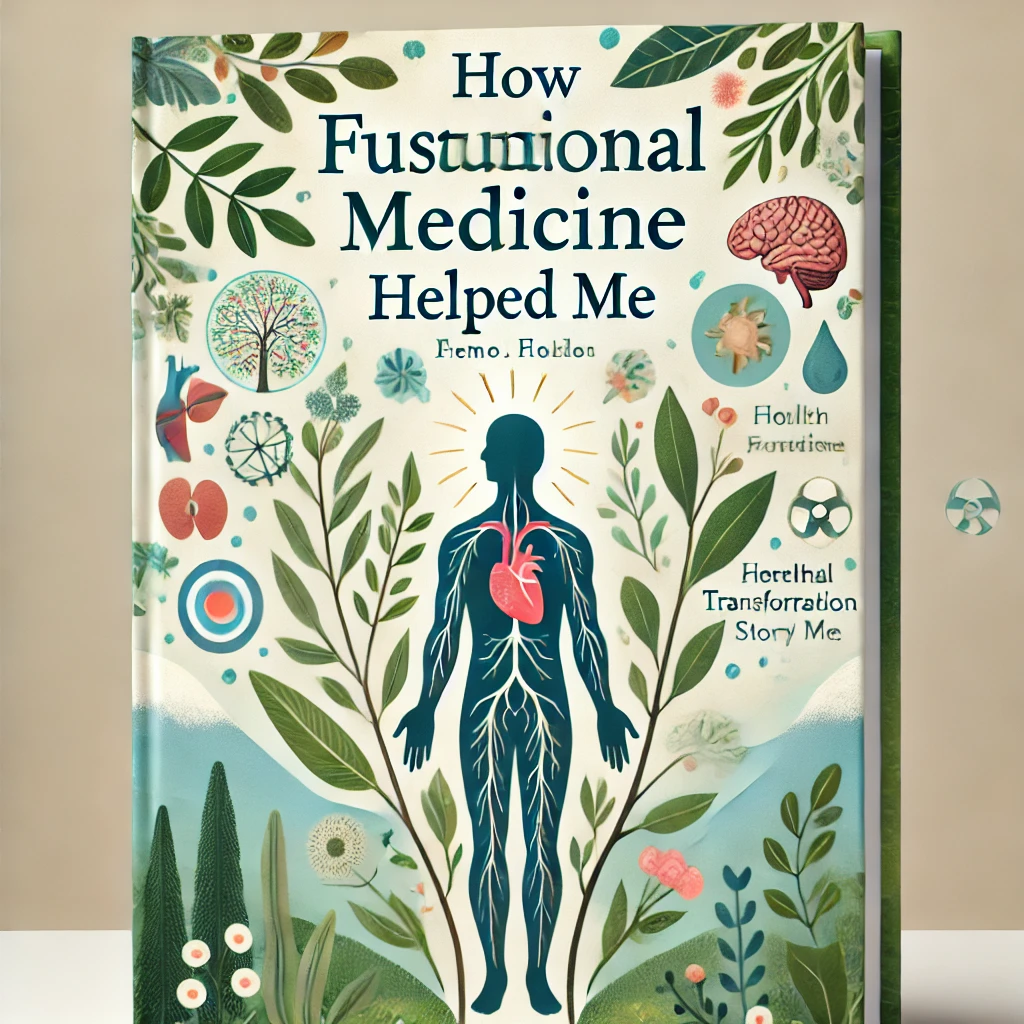Long COVID, Lung Inflammation, and Nitric Oxide: A Functional Medicine Success Story

Long COVID and the Breath That Never Came Back: A Functional Medicine Approach to Respiratory Recovery
When a 35-year-old white male came into my office for a functional medicine evaluation, he looked fit and healthy. A former bodybuilder, he maintained an athletic build and lived a relatively clean lifestyle. From the outside, you’d never guess he was battling anything.
But on the inside, he was still fighting the lingering effects of long COVID.
His main complaint? Breathing issues—persistent enough that he could no longer pass the physical and respiratory fitness testing required for his job. Before his COVID diagnosis, he’d never struggled. In fact, he’d routinely sailed through the testing. But now, every attempt left him winded and frustrated.
Aside from testosterone replacement therapy, he wasn’t on any other medications. No chronic illnesses. No known lung disease. No reason—at least conventionally—why this healthy, muscular man should be gasping for air.
And that’s where functional medicine comes in.
Long COVID and Respiratory Dysfunction: What We Know
Long COVID is still being studied, but one thing is clear: respiratory symptoms are among the most persistent and debilitating.
Even after the virus is gone, many patients report:
- Shortness of breath
- Decreased exercise tolerance
- “Air hunger” or shallow breathing
- Chest tightness, especially with exertion
What’s going on here?
For some, residual inflammation in the lungs—particularly the alveoli and blood vessels—may be the culprit. In others, impaired oxygen exchange or autonomic dysfunction could be contributing. But in many, standard workups come back “normal,” leaving patients stuck without solutions.
This is why functional medicine is uniquely positioned to help. Rather than focusing on diagnosing a specific lung disease, we look at what systems are out of balance—and what tools we can use to restore function.
Step 1: Identify the Roadblocks to Healing
After a detailed intake, we focused our evaluation on three core systems:
1. Nutrient Status
Even healthy individuals—especially those under chronic immune stress—can become micronutrient-depleted. We checked for deficiencies in:
- Magnesium
- Zinc
- Vitamin D
- B vitamins
- Iron status (key for oxygen delivery)
- Amino acids and protein intake
2. Inflammatory Markers
Given his shortness of breath and exertional fatigue, we suspected persistent inflammation in his lungs or vascular tissue. We assessed for systemic inflammation and oxidative stress.
3. Nitric Oxide Deficiency
This was the X-factor we suspected early. Why?
Because nitric oxide (NO) plays a key role in respiratory function by:
- Dilating blood vessels in the lungs
- Improving oxygen delivery to tissues
- Reducing vascular resistance
- Enhancing the release of oxygen from red blood cells
In long COVID, nitric oxide levels are often suppressed—especially in individuals with lingering vascular inflammation or endothelial dysfunction.
The Functional Treatment Plan
Once we identified the likely mechanisms behind his symptoms, we created a plan that targeted the root issues:
1. Replenish Micronutrients
We supported his recovery with:
- Magnesium glycinate (200–400 mg/day)
- Vitamin D3 with K2 (5000 IU/day)
- Zinc (30 mg/day)
- Methylated B-complex
- Iron-rich foods with cofactors as needed
- High-quality protein intake to support muscle and lung tissue repair
2. Reduce Lung and Systemic Inflammation
We addressed lingering inflammation through:
- Omega-3 fatty acids (3 grams/day)
- NAC (N-acetylcysteine) to support lung detoxification
- Curcumin and quercetin, natural anti-inflammatories
- Glutathione support, either oral or nebulized as tolerated
3. Boost Nitric Oxide Production
To improve lung vasodilation and oxygen exchange:
- Beetroot powder and arugula (dietary nitrates)
- L-citrulline (2–4 grams daily)
- Vitamin C and polyphenols to support NO pathways
- Red light therapy 2–3x per week to stimulate local NO production
4. Optimize Mitochondrial Function
Fatigue and breathlessness often tie into poor cellular energy production. We added:
- CoQ10 (100–200 mg/day)
- PQQ
- Ubiquinol and mitochondrial adaptogens as needed
The Results: Two Months Later
After just eight weeks, the patient returned with some welcome news:
“I feel like I can finally take a full breath again.”
He reported:
- Markedly improved breathing
- Increased exercise tolerance
- Less fatigue during work-related tasks
- More stable energy throughout the day
While he’s still under our care—and we plan to continue refining his protocol—his functional improvements are both subjective and practical. Most importantly, he is regaining control over a body he once felt had betrayed him.
Why This Case Matters
This patient didn’t have a textbook lung disease. His scans were clear. Pulmonary function testing was borderline, but not enough to explain his daily struggle.
Yet he knew his body wasn’t the same. And he was right.
What this case teaches us:
- You don’t need to have a “disease” to be dysfunctional.
- Nitric oxide plays a major role in post-COVID recovery.
- Even fit individuals can be nutrient-depleted.
- Inflammation can linger long after the acute virus is gone.
- Functional medicine offers solutions when conventional care says, “just wait it out.”
Final Thoughts
Long COVID is real. And for many patients, it’s not just a matter of waiting—it’s a matter of restoring what the virus disrupted.
For this former bodybuilder, addressing inflammation, nutrient depletion, and nitric oxide deficiency made all the difference. His breathing improved, his confidence returned, and he’s well on his way to full functional recovery.
Are you struggling with long COVID symptoms like fatigue or shortness of breath?
We can help. Schedule a virtual or in-person consultation with Dr. Sheen by calling 314-842-1441.
You don’t have to accept your “new normal.” Functional medicine can help you get your life—and your breath—back.